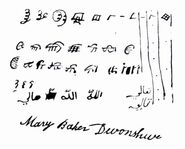Concore is an aesthetic associated with thieves, conmen, grifters, lifters, and scammers. The prefix comes from the word con, which is short for “confidence trick.” The core element of a con is convincing people that someone or something is other than what it is in reality and is usually done for monetary gain. Concore aesthetics frequently appear in espionage, crime, and detective media.
Concore experienced revival beginning in the 2010s, with social media influencers using photography tricks and editing software like Photoshop to appear thinner and healthier in an effort to earn commission on untested products.
Criticism[]
False sense of Anti-Capitalism[]
Stealing from large corporations is often justified as an anti-capitalist protest. In reality, most large corporations are far too wealthy to feel the pain of large thefts and the blame for the theft falls on employees, who can lose their jobs.
Theft of the "wrong" things[]
Some critics believe that the skills of hackers and thieves should be utilized to benefit a social majority, such as erasing student loan debt or medical debt.
Privacy concerns[]
Data hacks can expose personal information such as medical history or credit card information to thieves. The exposure of personal information of minors is of special concern.
Vigilante Justice[]
Thieves sometimes justify their actions as a way of getting back at a high powered politician or member of the wealthy elite. Many members of the general public feel that justice should be carried out in the court of law, as the fear and violence instigated by the conmen can outweigh the crime they are accused of committing.
Fashion[]
A good con artist is capable of blending in, fitting in or standing out, as the occasion demands. Clothing is appropriate to the class, culture and ethnic background of the persona the con artist is portraying and often relies on stereotypes. A female con artist can sometimes take on a Femme Fatale persona.
Black Tie[]
- ballgowns
- suits
- jewels
- fur coats
Ethnic Dress[]
- hijabs, burqas
- saris
Uniforms[]
- law enforcement
- servants and waiters
- school uniforms
- lab coats
Religious dress[]
- nun's and monk's clothing
- priest's clothing
Makeup and Prosthetics[]
- fake noses and ears
- scars, birthmarks, and freckles applied with makeup
- fake tattoos
- fake piercings
- wigs, hairpieces, and bald caps
Activities[]
Con artists generally engage in illegal activity, but they have many skills which can be useful or fun for ordinary people.
- Editing photos in Photoshop
- Genealogy
- Lock picking on locks at home
- Magic tricks
- Makeup transformations and cosplay
- Painting
There are also some activities that feel like cons because society has conditioned us to behave in certain ways.
- Cooking copycat recipes
- DIY furniture projects, often called Ikea Hacks
- donating to RIP Medical Debt
Media[]
Books[]
- Au Revoir, Crazy European Chick by Joe Schreiber
- Call Down the Hawk by Maggie Stiefvater
- Heist Society series by Ally Carter
- Oliver Twist by Charles Dickens
- The Disreputable History of Frankie Landau-Banks by E. Lockhart
Movies[]
- A Simple Favor (2018)
- Anastacia (1997)
- Catch Me if You Can (2002)
- Charade (1963)
- Dead to Me (2019)
- Gambit (2012)
- Gone Girl (2014)
- Heartbreakers (2001)
- How to Marry A Millionaire (1953)
- I Care A Lot (2021)
- Monte Carlo (2011)
- Mrs. Doubtfire (1993)
- North by Northwest (1959)
- St. Trinian’s (2007)
- Ocean's 11 (1960)
- Ocean's Eleven (2001)
- The Decoy Bride (2011)
- The Hustle (2019)
- The Last Vermeer (2019)
- The Parent Trap (1961) and (1998)
- The Princess Switch (2018) and The Princess Switch: Switched Again (2020)
- The Proposal (2009)
- The Saint (multiple versions)
- The Talented Mr. Ripley (1999)
- The Tourist (2010)
- The Two Faces of January (2014)
- The Wolf of Wall Street (2013)
- Trading Places (1983)
- Princess Caraboo (1994)
TV Shows[]
- Don't Trust the B---- in Apartment 23 (2012-2013)
- Imposters (2017)
- Ringer (2011-2012)
- Riviera (2017-)
- The Riches (2007-2009)
- Trinkets (2019-2020)
- Leverage (2008-2012)
- No Good Nick (2019)
- Trailer Park Boys (2001-)
- White Collar (2009-2014)
- White Gold (2017-2019)
Notable Figures[]
1750 BC[]
- Ea-nasir, a copper merchant of Babylon, ripped off a customer named Nanni by selling him copper ore of a value much less than the price Nanni was charged. Nanni's message of complaint to Ea-nasir is preserved on a clay tablet.
300 BC[]
- Hegestratos and Xenothemis, two Greek shipping merchants, took a bottomry out on a merchant ship with a cargo of grain, with a plot to send the ship out empty, sink it (without anyone knowing they caused it), pocket the insurance money, and sell the grain elsewhere. Their plan was thwarted mid-journey, but theirs is credited as the earliest documented case of fraud in the Western world.
1817[]
- "Princess Caraboo" (real name Mary Baker) conned an English village into believing she was a Indonesian princess from an as yet undiscovered island. As part of the con, Baker invented the island of Javasu, a spoken and written language, religion, and style of dress.
1870s[]
- Jefferson "Soapy" Smith developed his infamous “Prize Soap" racket. Before a crowd of onlookers, he would wrap some of his cakes of soap with bills ranging from $1 to $100 and mix them in with the rest of the wrapped cakes. Through sleight-of-hand, the only people who "won" the prize soaps were gang members planted in the crowds.
1920s[]
- Charles Ponzi duped thousands on the East Coast into a postage stamp speculation scheme of the type that would become known as the Ponzi Scheme.
1960s[]
- Wolfgang and Helene Beltracchi, husband and wife team who sold paintings by famous artists (in reality painted by Wolfgang) with proof of their legitimacy given via staged photographs of Helene posing as her grandmother, who they claimed was the original owner of the paintings. They were not discovered until 2010.
1970s[]
- Frank Abagnale Jr. was supposedly a highly successful con artist who is the subject of the book and movie Catch Me If You Can. His cons were in fact part of an elaborate con to present himself as a successful con artist!
1990s[]
- John Myatt, a British artist who produced paintings in the style of famous artists like Leonardo da Vinci and Gustav Klimt which were later sold as genuine paintings to galleries in London. He coined the term "genuine fake" which is used to describe art which is made in the style or materials the original artist used but is not a copy of an original work.
2010s[]
- “Anna Delvey” (real name Anna Sorokin) scammed hundreds of people by pretending to be a Russian heiress who had the money to repay the money they loaned her
Subgenres[]
Heistcore[]
The aesthetic of those who create and carry out elaborate plans to steal art, money, and jewels.
Resources[]
External links to help get a better understanding of this aesthetic.
- Wikipedia entry on confidence tricks
- Famous Con Artists
- How Scammers Trick People Into Believing They Are Wealthy
- A Guide to Persuasion
- A Guide to Manipulation
- A Guide to Deception
Specific Cons[]
Vendors[]
DIY[]
- I FAKED going on HOLIDAY for a whole WEEK!
- I FAKED BEING ON THE COVER OF VOGUE... AND PEOPLE BELIEVED IT!



